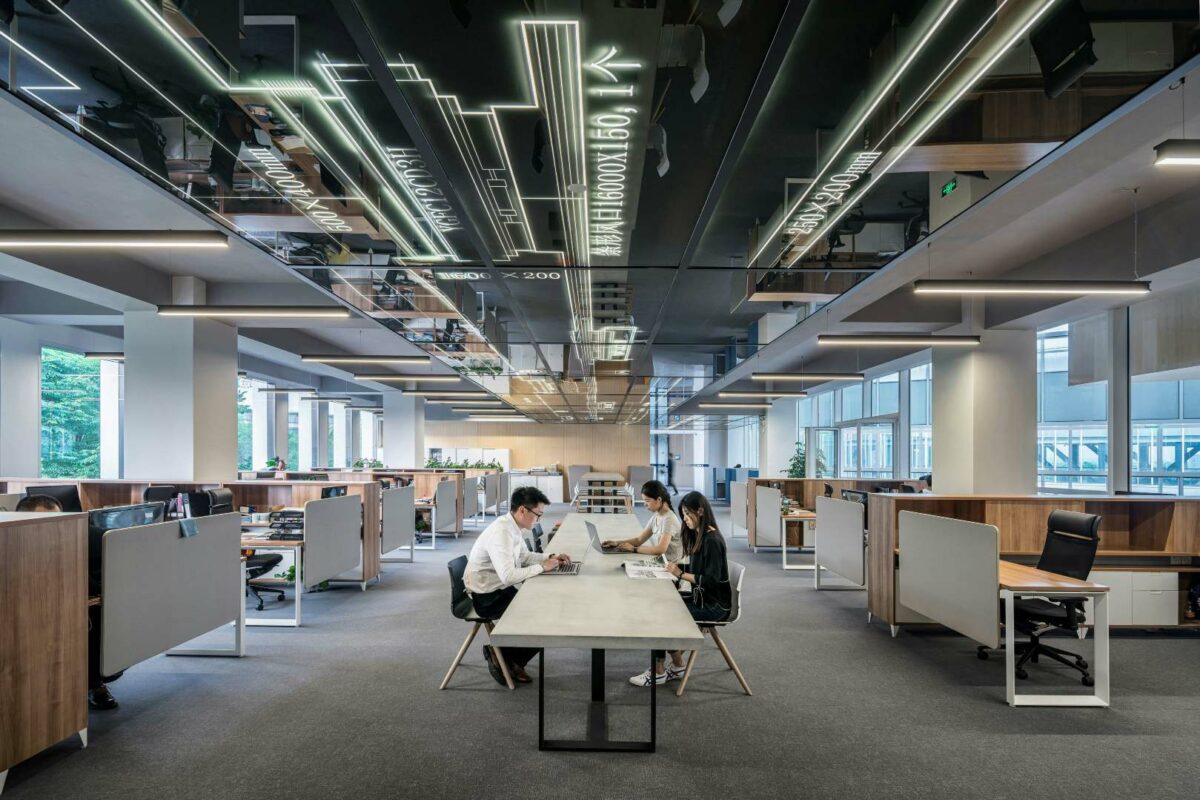Mould is common in commercial buildings. It poses a significant health threat where high concentrations exist in poorly ventilated indoor spaces. The best solution is to remediate the source of the problem so that the environment is no longer conducive to mould growth. Meanwhile, deploying a well-designed air purifier will mitigate the health risks to humans from inhaling airborne mould spores.
Edward – let’s start with the basics – what is mould?
Mould is a microscopic fungus that grows in damp places. It’s heterotrophic, such that it can’t make its own food like plants do, so it must gain nutrients from other organic substances. A mould colony grows by expanding a net of interconnected hyphae, known as a ‘mycelium’, which serves as a mechanism for transporting nutrients and water between different parts of the colony.
Mould produces tiny particles called spores that are dispersed and carried in the air to reproduce. The dust-like, coloured appearance of mould is due to the formation of these fungal spores, which can contain toxic secondary metabolites.
The most common indoor moulds are Cladosporium, Penicillium, and Aspergillus.
How does mould present a problem in the indoor work environment?
Mould is found both indoors and outdoors. It can enter an indoor space through open doorways, windows, vents, and air conditioning systems. Mould in the air outside can also attach itself to clothing, shoes, and pets and then be carried indoors.
Mould will grow when mould spores drop on places where there is excessive moisture or humidity, including the inside of a Heating, Ventilation & Air Conditioning (HVAC) system, which can further contribute to the spread of spores throughout a workplace.
Many building materials provide suitable nutrients that encourage mould to grow. As well as areas around leaks in roofs, windows, pipes or appliances, mould grows well on paper products, cardboard, ceiling tiles, and wood products, and can also grow in dust, paints, wallpaper, insulation, drywall, carpet, fabric, and upholstery.
What is the impact of mould on staff?
Exposure to mouldy environments may cause a variety of health effects. For some, it can lead to symptoms such as a stuffy nose, wheezing, and red or itchy eyes, or skin.
People with allergies to moulds or with asthma may have more intense reactions. Severe symptoms – like fever and shortness of breath – may also occur among workers exposed regularly to large quantities of mould in occupational settings, such as people working in damp basements or warehouses. Some types of mould release mycotoxins, which are absorbed by the skin or inhaled into the lungs. The World Health Organisation warns that the adverse health effects of mycotoxins range from acute poisoning to long-term effects such as immune deficiency and cancer.
The presence of mould in the workplace is a recognised cause of Sick Building Syndrome and is associated with high absenteeism and a sharp decrease in productivity.
How can we keep mould at bay to protect health?
As part of routine maintenance, a commercial building should be inspected for evidence of water damage and visible mould.
Mould growth can be controlled by:
- Detecting and remedying the source of the moisture problem that allows mould to develop e.g. water leaks, condensation, poor ventilation, or flooding.
- Removing any known mould infestations that have been found through visual inspection.
- Controlling excessive moisture, humidity and condensation e.g. through improved natural and/or mechanical ventilation.
Are there short term solutions to protect health?
It’s always preferable to correct the root cause of mould growth. However, economic and practical issues can prevent such corrective measures being implemented, resulting in poorly ventilated, occupied indoor workspaces being polluted by airborne mould spores.
A well-engineered indoor air purifier equipped with HEPA filtration will effectively remove a minimum of 99.97% of airborne mould spores, continuously cleaning the indoor air space. However, given the health risks associated with airborne mould when inhaled by humans, a building owner or occupier should check that the air purifier has been independently tested in a real life scenario that validates the manufacturer’s claims.
The use of an air purifier to remove airborne mould could lead to a new hidden risk. Whilst the HEPA filter will effectively trap the mould, it will not inactivate the fungus protein. The danger is that the trapped mould will grow on the filter in a damp environment, and spores will be released back into the air from the air purifier itself.
Air purifiers that combine HEPA filtration with germicidal UVC light will not only trap the spores, but inactivate them, stopping mould dead in its tracks and preventing further reproduction.
Final thoughts?
Mould is a common problem, especially in the wet conditions that the UK has experienced of late. The danger to health is often underestimated, but the tragic death of a toddler in Rochdale from a respiratory condition caused by exposure to mould has highlighted the severity of mould infestations in occupied spaces.
Nobody should have to work or live in mould infested conditions. However, where evacuation is not an option, portable air purification technology using HEPA and UVC can offer a practical short-term solution before remedial works are carried out to deal with the root cause of the infestation.
About Rensair
Rensair is a specialist in indoor air quality, protecting and enhancing lives through proven clean air technology. The company’s award-winning air purifiers are independently validated by world renowned scientific laboratories, removing risk as well as polluted air.
A new independent report from Indoor Science proves the effectiveness of Rensair’s Core air purifier in trapping mould spores and destroying the proteins that contain harmful allergenic properties. Initial tests determined that the Clean Air Delivery Rate exceeded the 500m3 per hour recommended for classrooms and that the HEPA filter was 99.97% efficient at removing particles of 0.3 microns. Subsequent tests on the unit’s ability to destroy trapped microorganisms found that – after 30 mins of UV exposure – all test viruses and mould spores were deactivated, thereby preventing reproduction.
Case study: Rensair has helped Skechers, the American multinational footwear company, to tackle a mould problem in one of its London stores.
The author
Edward Ballsdon is Co-founder and Managing Director of Rensair, a UK-based company that protects and enhances lives through clean air. After a career in financial services, Edward has expanded the company’s operations in Europe, North America, and Asia to meet commercial demand driven by the Coronavirus pandemic. Edward is a UK resident and has a BSc Hons in Business Studies from the University of Buckingham.
Content Team
Work in Mind is a content platform designed to give a voice to thinkers, businesses, journalists and regulatory bodies in the field of healthy buildings.




